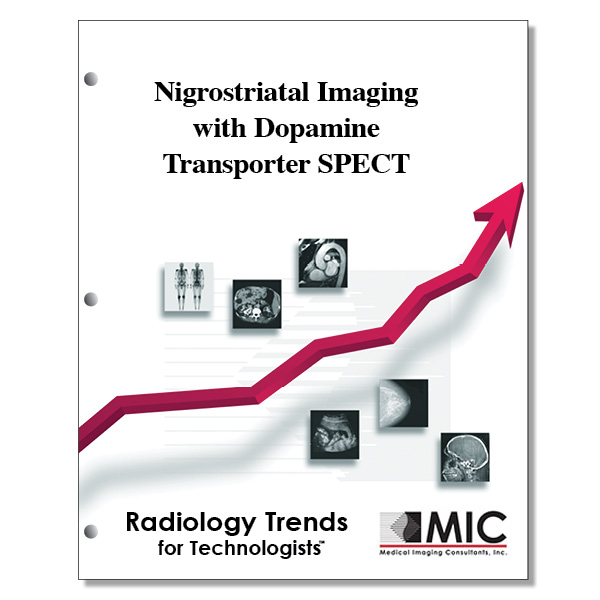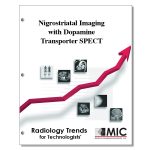

Nigrostriatal Imaging with Dopamine Transporter SPECT
An update on nigrostiatal dopamine terminal imaging with emphasis on SPECT performed with the presynaptic dopamine transporter ligand.
Course ID: Q00394 Category: Radiology Trends for Technologists Modality: Nuclear Medicine2.5 |
Satisfaction Guarantee |
$29.00
- Targeted CE
- Outline
- Objectives
Targeted CE per ARRT’s Discipline, Category, and Subcategory classification for enrollments starting after May 9, 2023:
[Note: Discipline-specific Targeted CE credits may be less than the total Category A credits approved for this course.]
Nuclear Medicine Technology: 2.00
Procedures: 2.00
Other Imaging Procedures: 2.00
Registered Radiologist Assistant: 2.25
Safety: 0.25
Patient Safety, Radiation Protection, and Equipment Operation: 0.25
Procedures: 2.00
Neurological, Vascular, and Lymphatic Sections: 2.00
Outline
- Introduction
- Proof of Neurodegenerative PS
- Early Diagnosis of Neurodegenerative PS
- SWEDDS
- Assessment of Disease Progression
- Differential Diagnosis Between Neurodegenerative Types of PS
- Proof of Symptomatic Parkinsonism
- Tremor Syndromes
- Vascular PS
- Drug-Induced PS
- Psychogenic PS
- Normal-Pressure Hydrocephalus
- Dopa-Responsive Dystonia (DRD
- Differential Diagnosis of DLB
- Selected Methodologic Considerations
- Economic Considerations
- Conclusion
Objectives
Upon completion of this course, students will:
- know the anatomical structures targeted by 123I-FP-CIT
- discuss the various key functions that can be assessed with radioligant imaging
- understand the physiologic process of DAT
- identify the various reasons why the diagnosis of PD is clinically difficult
- be familiar with the first structure affected by the loss of dopaminergic neurons
- understand the distribution of 123I-FP-CIT on a positive study
- discuss what marked loss of striatal DAT binding indicates for a clinical patient
- identify the threshold of nigrostriatal neuron loss where clinical symptoms appear
- be familiar with SWEDD patients and why they are unique in 123I-FP-CIT imaging
- discuss the possible cause of SWEDD
- discuss the differences between SWEDD patients and patients with classic PD
- promote knowledge of disease progression for SWEDD patients as it compares to PS
- be familiar with the differences between aPS and PD in terms of unique results of long term follow-up
- understand the differences with annual rates of disease progression for early versus late stage patients
- identify other imaging methods that can aid in the diagnosis of disease
- understand the course of care when a study is reported as normal
- understand unique characteristics of ET that make it different from other forms of tremor
- understand the qualities and shortcomings of 123I-FP-CIT in the differentiation of disease
- know orthostatic tremor symptoms as they relate to other forms of tremor
- know the symptoms associated with vascular PS
- understand the effects of neuroleptic drugs and how they can induce parkinsonian symptoms
- know gait disturbances that affect patients with Normal-Pressure Hydrocephalus
- understand diseases that resemble PD in their symptoms
- understand how 123I-FP-CIT can be used to differentiate DLB from Alzheimer Disease
- understand how 123I-FP-CIT can be used to differentiate PS from Psychogenic PS
- be familiar with the length of time needed for medication withholding prior to imaging
- know the proper means of reducing radiation exposure to patients undergoing imaging
- understand the appropriate action in the event of a hypersensitivity reaction
- understand the required licensure for the handling and administration of 123I-FP-CIT
- be familiar with the manufacturer recommended wait time prior to the start of 123I-FP-CIT imaging
